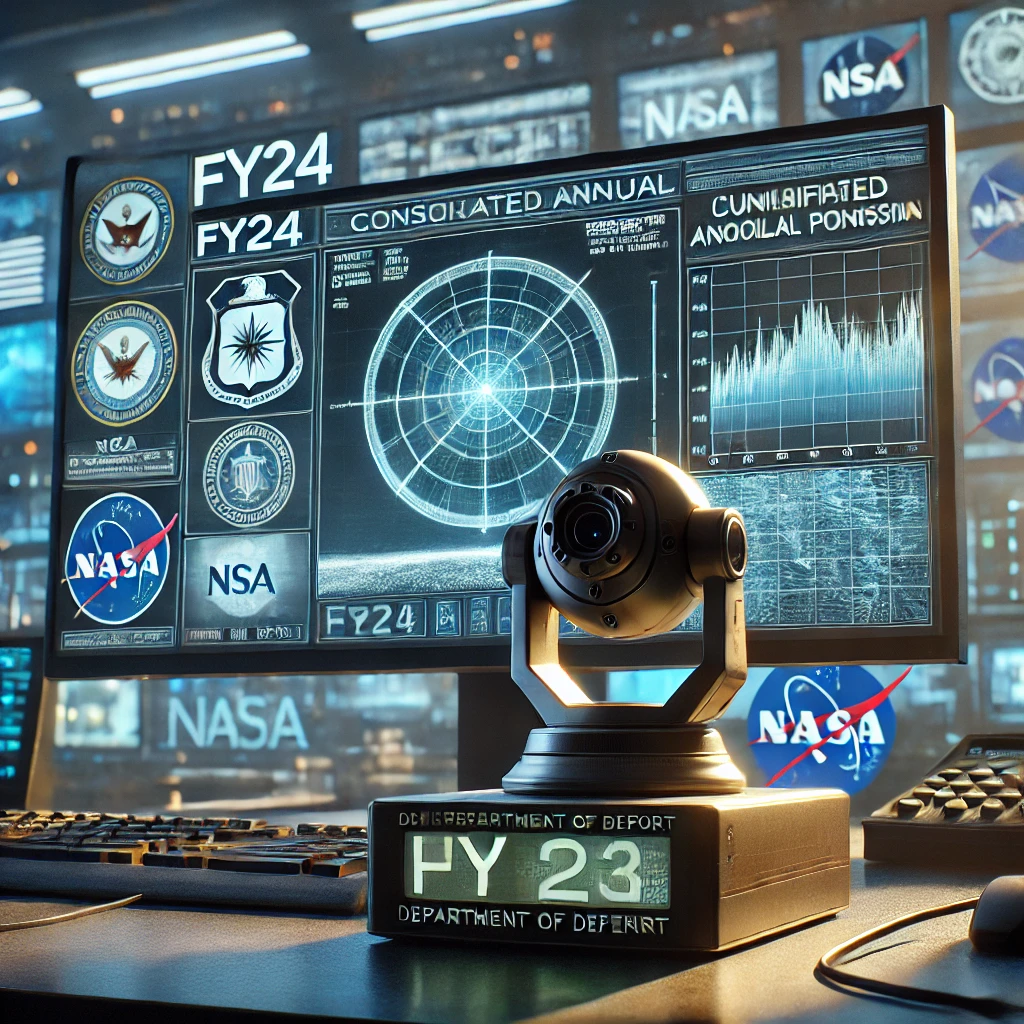FY24 Consolidated Annual Report on Unidentified Anomalous Phenomena (UAP)

The FY24 Consolidated Annual Report on Unidentified Anomalous Phenomena (UAP), released today by the Department of Defense, brings new perspectives to public attention on UAP activity, capturing developments from May 1, 2023, to June 1, 2024. Amidst ongoing debate around extraterrestrial theories, this report presents a wealth of nuanced data and findings, steering the conversation toward a structured examination of UAP incidents. This analysis seeks to clarify less-publicized aspects, illustrating the report’s depth and range in addressing UAP phenomena.
This year’s report, mandated under the U.S. Code and produced by the Department of Defense, reflects unprecedented collaboration across agencies, including the FBI, NSA, NASA, and various branches of the military. Utilizing geospatial (GEOINT), signals (SIGINT), human (HUMINT), and measurement and signature intelligence (MASINT) methods, these agencies consolidated a wide array of UAP data. Notably, the All-domain Anomaly Resolution Office (AARO) managed reports from an expanded network, including increased submissions from the FAA, a testament to improved interagency cooperation, with FAA civil and commercial aviation logs now a core element of AARO’s data collection.
Among the report’s more unexpected findings is the frequency of unmanned aerial systems (UAS) near nuclear facilities, launch sites, and other sensitive nuclear assets across the U.S. Of 18 UAS incidents, two stood out due to unusual behavior patterns. One event lasted close to two hours, while a separate series of flyovers occurred at the BWXT Fuel Cycle Facility in Virginia for six consecutive nights in October 2023. These cases underscore potential vulnerabilities in nuclear facility security and raise critical questions about the origin and intent behind such incursions. However, the report’s findings reveal that attributing these UAS sightings to specific adversaries remains challenging, given the lack of conclusive data.
The limitations in data collection are a recurring theme in this report. While AARO received 757 reports during the year, 444 cases were moved to an “Active Archive” due to insufficient data, where they await further analysis. This archive, however, could play a vital role as future data emerges, enabling analysts to review patterns in retrospect. Partnerships with institutions such as Oak Ridge National Laboratory (ORNL) for materials analysis and the Massachusetts Institute of Technology for radar-based detection underscore AARO’s commitment to overcoming these analytic challenges. ORNL, for instance, analyzed material claimed to be from a UAP, marking the first known U.S. governmental evaluation of such material, with results that AARO plans to share publicly.
Despite advanced technology, several UAP cases were attributed to prosaic objects, such as birds, balloons, and commercial satellites, with misidentification frequently stemming from sensor limitations. For example, the Starlink satellite constellation has become an increasingly common source of UAP misidentification, with reports of white flashing lights aligning with known Starlink satellite launch paths. Video compression and electro-optical artifacts also create illusions of amorphous shapes, misleading observers into reporting UAP. The report emphasizes the necessity of sensor improvements, suggesting that more refined technology could eliminate many of these recurrent misidentifications.
Within the realm of flight safety, the report notes that while most sightings posed no risk, one report from a commercial aircrew detailed a near-miss with a cylindrical object off the Atlantic coast, still under investigation. Military aircrews also reported instances of being “shadowed” by UAP, amplifying concerns about the safety of U.S. airspace, especially in high-traffic regions. The proximity of these encounters has spurred AARO to tighten reporting protocols, a critical step toward understanding UAP impact on aircrew safety and airspace integrity.
An ambitious addition to AARO’s toolkit is the GREMLIN sensor suite, deployed for testing in March 2024. This system, designed to detect and analyze UAP, succeeded in data collection trials and is expected to provide substantial insights as it is more widely deployed in FY 2025. GREMLIN’s multiple sensing capabilities are tailored to resolve ambiguity in UAP sightings, offering a path to deeper, more accurate analyses of UAP behaviors, especially in areas of national security interest. This initiative reflects AARO’s push for high-quality data collection that extends beyond existing sensor technology.
AARO’s commitment to transparency is underscored by the October 31, 2023, launch of www.aaro.mil, a secure portal for reporting UAP incidents dating back to 1945. This platform, available to both current and former U.S. Government employees, signals AARO’s efforts to democratize UAP reporting, ensuring a robust collection of historical and contemporary data. Alongside its website, AARO resumed social media engagement in April 2024, bringing UAP developments to a wider audience. These efforts are in alignment with AARO’s strategic communications plan, which includes public engagement, sharing declassified UAP data, and addressing community inquiries.
The report concludes with a clear path forward, prioritizing expanded collection efforts in air, space, and maritime domains. Strategic alliances with government, academic, and commercial sectors are key to broadening AARO’s capabilities in sensor technology, analytic tools, and UAP-related sciences. The Department of Defense is committed to minimizing data gaps by honing intelligence collection methods, refining analytic tools, and working to mitigate geographic reporting biases.
In essence, the FY24 report shifts the UAP conversation from speculative to methodical, advocating for evidence-based analysis and interagency collaboration. While the vast majority of cases have mundane explanations, the report acknowledges the existence of unresolved phenomena that warrant ongoing scrutiny. This disciplined approach, underscored by public transparency and informed collaboration, reflects the Department of Defense’s nuanced understanding of the challenges and implications of UAP, marking a significant step toward a clearer, shared understanding of these phenomena.

